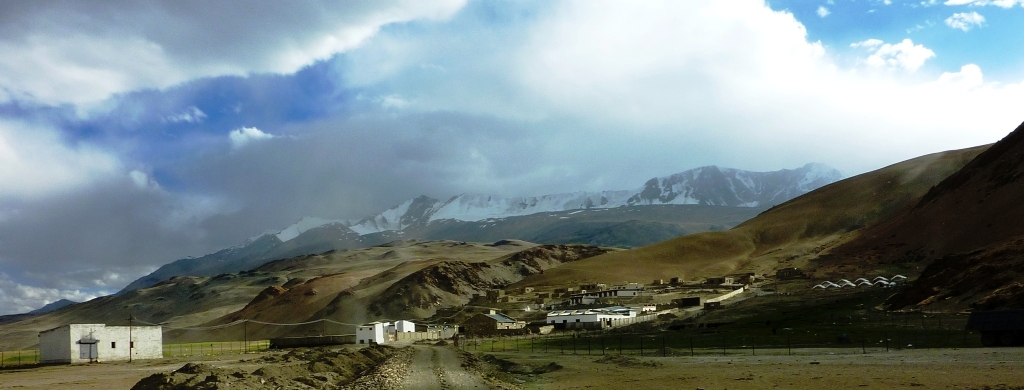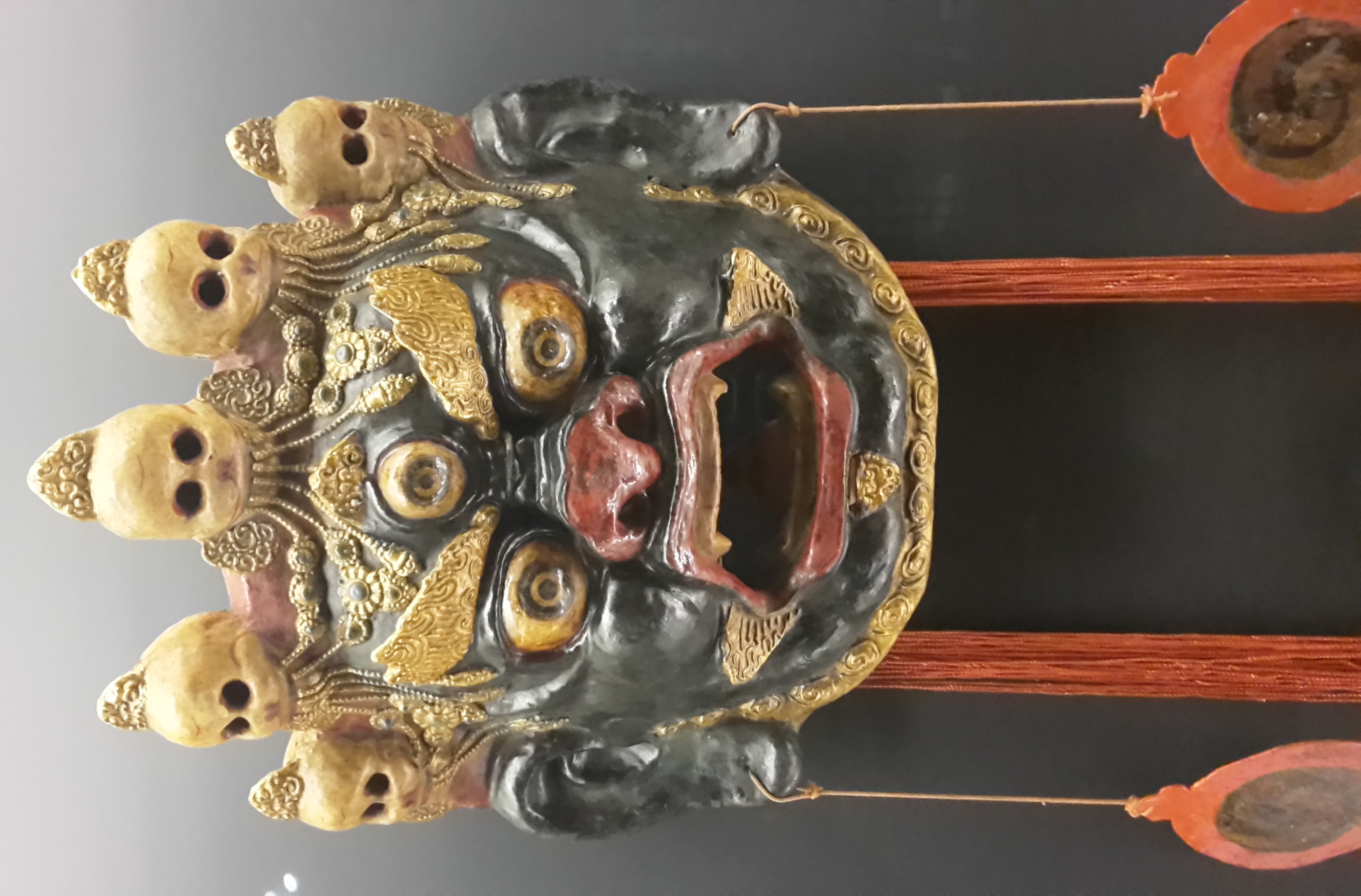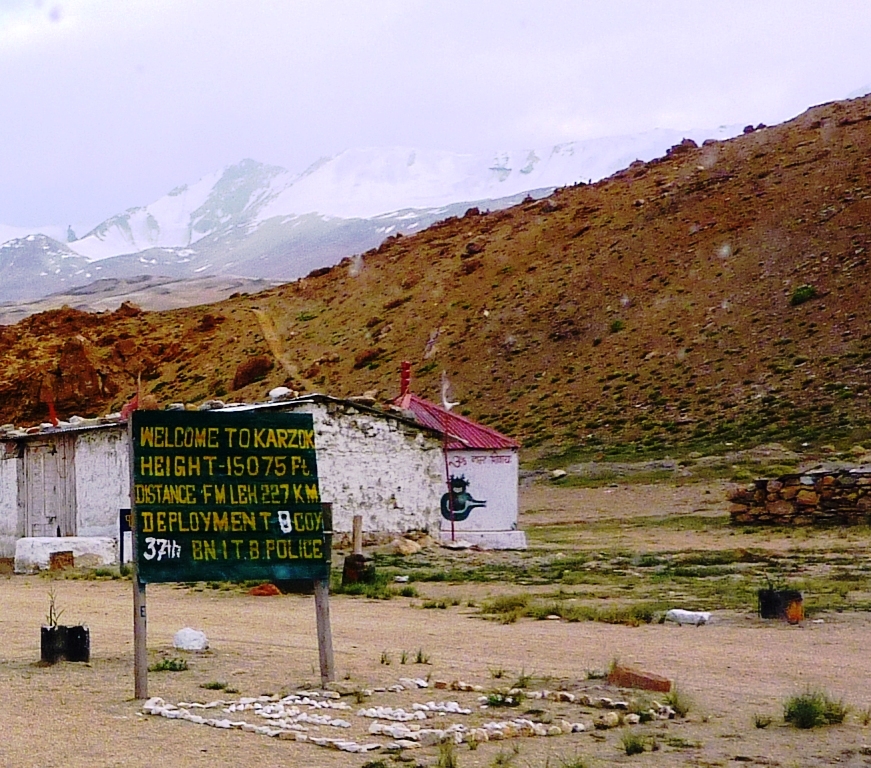|
Korzok Monastery
Korzok, དཀོར་མཛོད་ (wylie dkor-mdzod) is a Tibetan Buddhist monastery belonging to the Drukpa Lineage. It is located in the Korzok village, on the northwestern bank of Tso Moriri (lake) in Leh District, Ladakh, India. The gompa (monastery), at , houses a Shakyamuni Buddha and other statues. It is home to about 70 monks. In the past, the monastery was the headquarters of the Rupshu Valley. It is an independent monastery under Korzok Rinpoche, widely known as Langna Rinpoche. The 3rd Korzok Rinpoche, Kunga Lodro Ningpo was the founder of Korzok Monastery. The revered monastery is 300 years old. The Tso Moriri Lake below it is also held in reverence, and considered equally sacred by the local people. With the efforts of the WWF-India the Tsomoriri has been pledged as a 'Sacred Gift for a Living Planet' by the local community (mostly Chang-pa herdsmen). As a result, the area has been opened up for tourists. Etymology The word ‘Korzok’ is a derivative of tw ... [...More Info...] [...Related Items...] OR: [Wikipedia] [Google] [Baidu] |
Korzok
Karzok or Korzok is a village in the Leh district of Ladakh, India. It is located close to Nyoma, in the Rupshu region and block, on the shores of the Tso Moriri lake. It is among the highest towns in the world and the highest settlement in India. Various sources give slightly different measurements of the altitude from 14,995 ft (4,570 m) to 15,075 ft (4,595 m) above sea level. The Drukpa Buddhist Korzok Monastery is located here. History Karzok was on the Central Asian trade route until 1947 and was the headquarters of the Rupshu Valley. One of the kings, Rupshu Goba, who lived there with his family, built nine permanent houses there. The village has several houses, and the nomadic population who establish their tents (made of yak hair or skin) in summer, add to the agricultural operations in the region. The tents are provided with vents at the top to let out the smoke. Pashmina is the valuable product that the Changmas trade along with the salt that they extract from ... [...More Info...] [...Related Items...] OR: [Wikipedia] [Google] [Baidu] |
Pashmina
Pashmina (, ) refers to, depending on the source, a term for cashmere wool of the Changthangi cashmere goat,Janet Rizvi: ''Pashmina: The Kashmir Shawl and Beyond''. Marg Foundation, 2009. ISBN 978-8185026909. for fine Indian cashmere woolRobert R. Franck: ''Silk, Mohair, Cashmere and Other Luxury Fibres''. Volume 19 of ''Woodhead Publishing Series in Textiles'', Elsevier Science, 2001. ISBN 978-1855735408. p. 142. or a synonym for cashmere wool. The word ''pashm'' means "wool" in Persian, but in Kashmir, ''pashm'' referred to the raw unspun wool of domesticated Changthangi goats. In common parlance today, ''pashmina'' may refer either to the material or to the variant of the Kashmir shawl that is made from it. Both cashmere and pashmina come from the same goat but typical cashmere ranges from 12 to 21 microns in diameter, whereas ''pashmina'' can also refer to a cashmere and silk blend (70 % / 30 %) that has a typical fiber range from 12 to 16 microns. History Samples of wool fi ... [...More Info...] [...Related Items...] OR: [Wikipedia] [Google] [Baidu] |
Dharmapalas
A ''dharmapāla'' (, , ja, 達磨波羅, 護法善神, 護法神, 諸天善神, 諸天鬼神, 諸天善神諸大眷屬) is a type of wrathful god in Buddhism. The name means "''dharma'' protector" in Sanskrit, and the ''dharmapālas'' are also known as the Defenders of the Justice (Dharma), or the Guardians of the Law. There are two kinds of ''dharmapala'', Worldly Guardians (''lokapala'') and Wisdom Protectors (''jnanapala''). Only Wisdom Protectors are enlightened beings. Description A protector of Buddhist dharma is called a ''dharmapala''. They are typically wrathful deities, depicted with terrifying iconography in the Mahayana and tantric traditions of Buddhism. The wrathfulness is intended to depict their willingness to defend and guard Buddhist followers from dangers and enemies. The ''Aṣṭagatyaḥ'' (the eight kinds of nonhuman beings) is one category of ''dharmapālas'', which includes the Garuda, Deva, Naga, Yaksha, Gandharva, Asura, Kinnara and Mahoraga. In V ... [...More Info...] [...Related Items...] OR: [Wikipedia] [Google] [Baidu] |
Tibetan Plateau
The Tibetan Plateau (, also known as the Qinghai–Tibet Plateau or the Qing–Zang Plateau () or as the Himalayan Plateau in India, is a vast elevated plateau located at the intersection of Central, South and East Asia covering most of the Tibet Autonomous Region, most of Qinghai, western half of Sichuan, Southern Gansu provinces in Western China, southern Xinjiang, Bhutan, the Indian regions of Ladakh and Lahaul and Spiti (Himachal Pradesh) as well as Gilgit-Baltistan in Pakistan, northwestern Nepal, eastern Tajikistan and southern Kyrgyzstan. It stretches approximately north to south and east to west. It is the world's highest and largest plateau above sea level, with an area of (about five times the size of Metropolitan France). With an average elevation exceeding and being surrounded by imposing mountain ranges that harbor the world's two highest summits, Mount Everest and K2, the Tibetan Plateau is often referred to as "the Roof of the World". The Tibetan Plateau ... [...More Info...] [...Related Items...] OR: [Wikipedia] [Google] [Baidu] |
Korzok Monastery8
Karzok or Korzok is a village in the Leh district of Ladakh, India. It is located close to Nyoma, in the Rupshu region and block, on the shores of the Tso Moriri lake. It is among the highest towns in the world and the highest settlement in India. Various sources give slightly different measurements of the altitude from 14,995 ft (4,570 m) to 15,075 ft (4,595 m) above sea level. The Drukpa Buddhist Korzok Monastery is located here. History Karzok was on the Central Asian trade route until 1947 and was the headquarters of the Rupshu Valley. One of the kings, Rupshu Goba, who lived there with his family, built nine permanent houses there. The village has several houses, and the nomadic population who establish their tents (made of yak hair or skin) in summer, add to the agricultural operations in the region. The tents are provided with vents at the top to let out the smoke. Pashmina is the valuable product that the Changmas trade along with the salt that they extract from ... [...More Info...] [...Related Items...] OR: [Wikipedia] [Google] [Baidu] |
Marmot
Marmots are large ground squirrels in the genus ''Marmota'', with 15 species living in Asia, Europe, and North America. These herbivores are active during the summer, when they can often be found in groups, but are not seen during the winter, when they hibernate underground. They are the heaviest members of the squirrel family. Description Marmots are large rodents with characteristically short but robust legs, enlarged claws which are well adapted to digging, stout bodies, and large heads and incisors to quickly process a variety of vegetation. While most species are various forms of earthen-hued brown, marmots vary in fur coloration based roughly on their surroundings. Species in more open habitat are more likely to have a paler color, while those sometimes found in well-forested regions tend to be darker. Marmots are the heaviest members of the squirrel family. Total length varies typically from about and body mass averages about in spring in the smaller species and in aut ... [...More Info...] [...Related Items...] OR: [Wikipedia] [Google] [Baidu] |
Kiang
The kiang (''Equus kiang'') is the largest of the ''Asinus'' subgenus. It is native to the Tibetan Plateau, where it inhabits montane and alpine grasslands. Its current range is restricted to the plains of the Tibetan plateau; Ladakh; and northern Nepal. Other common names for this species include Tibetan wild ass, khyang and gorkhar. Travellers' accounts of the kiang are one inspiration for the unicorn. Characteristics The kiang is the largest of the wild asses, with an average height at the withers of . They range from high at the withers, with a body long, and a tail of . Kiangs have only slight sexual dimorphism, with the males weighing from , while females weigh . They have a large head, with a blunt muzzle and a convex nose. The mane is upright and relatively short. The coat is a rich chestnut colour, darker brown in winter and a sleek reddish brown in late summer, when the animal moults its woolly fur. The summer coat is 1.5 cm long and the winter coat is doubl ... [...More Info...] [...Related Items...] OR: [Wikipedia] [Google] [Baidu] |
Changthang
The Changtang (alternatively spelled Changthang or Qangtang) is a part of the high altitude Tibetan Plateau in western and northern Tibet extending into the southern edges of Xinjiang as well as southeastern Ladakh, India, with vast highlands and giant lakes. From eastern Ladakh, the Changtang stretches approximately east into Tibet as far as modern Qinghai. The Changtang is home to the Changpa, a nomadic Tibetan people. The two largest settlements within the Tibetan Changtang are Rutog Town the seat of Rutog County and Domar Township the seat of Shuanghu County. Climate The summers are warm but short and thunderstorms can occur at any time of year, often with hail. The winters are cold and Arctic-like, despite the latitude, due to the high elevation. History Changtang was once ruled by a culture known as the Zhangzhung, which later merged with Tibetan culture. People The people of the Changtang are nomadic pastoralists, they are known as 'Changpa', for 'northerners,' or 'Dr ... [...More Info...] [...Related Items...] OR: [Wikipedia] [Google] [Baidu] |
Ramsar Convention
The Ramsar Convention on Wetlands of International Importance Especially as Waterfowl Habitat is an international treaty for the conservation and sustainable use of Ramsar sites (wetlands). It is also known as the Convention on Wetlands. It is named after the city of Ramsar in Iran, where the convention was signed in 1971. Every three years, representatives of the contracting parties meet as the Conference of the Contracting Parties (COP), the policy-making organ of the convention which adopts decisions (resolutions and recommendations) to administer the work of the convention and improve the way in which the parties are able to implement its objectives. COP12 was held in Punta del Este, Uruguay, in 2015. COP13 was held in Dubai, United Arab Emirates, in October 2018. List of wetlands of international importance The list of wetlands of international importance included 2,331 Ramsar sites in May 2018 covering over . The countries with most sites are the United Kingdo ... [...More Info...] [...Related Items...] OR: [Wikipedia] [Google] [Baidu] |
Kyang At Tsomoriri
Kyang is a village development committee in Parbat District in the Dhawalagiri Zone of central Nepal. At the time of the 1991 Nepal census The 1991 Nepal census was a widespread national census conducted by the Nepal Central Bureau of Statistics. Working with Nepal's Village Development Committees at a district level, they recorded data from all the main towns and villages of each ... it had a population of 2279 people living in 443 individual households. Kyang is one of the best touristic destination of Parbat district. The hill of Haljure situated at around 2465m altitude is one of the best view point of Parbat. . References External linksUN map of the municipalities of Parbat District Populated places in Parbat District {{Parbat-geo-stub ... [...More Info...] [...Related Items...] OR: [Wikipedia] [Google] [Baidu] |
Thangka
A ''thangka'', variously spelled as ''thangka'', ''tangka'', ''thanka'', or ''tanka'' (; Tibetan: ཐང་ཀ་; Nepal Bhasa: पौभा), is a Tibetan Buddhist painting on cotton, silk appliqué, usually depicting a Buddhist deity, scene, or mandala. Thangkas are traditionally kept unframed and rolled up when not on display, mounted on a textile backing somewhat in the style of Chinese scroll paintings, with a further silk cover on the front. So treated, thangkas can last a long time, but because of their delicate nature, they have to be kept in dry places where moisture will not affect the quality of the silk. Most thangkas are relatively small, comparable in size to a Western half-length portrait, but some are extremely large, several metres in each dimension; these were designed to be displayed, typically for very brief periods on a monastery wall, as part of religious festivals. Most thangkas were intended for personal meditation or instruction of monastic students. The ... [...More Info...] [...Related Items...] OR: [Wikipedia] [Google] [Baidu] |
Chortens In Korzok
A stupa ( sa, स्तूप, lit=heap, ) is a mound-like or hemispherical structure containing relics (such as ''śarīra'' – typically the remains of Buddhist monks or nuns) that is used as a place of meditation. In Buddhism, circumambulation or ''pradakhshina'' has been an important ritual and devotional practice since the earliest times, and stupas always have a ''pradakhshina'' path around them. The original South Asian form is a large solid dome above a tholobate or drum with vertical sides, which usually sits on a square base. There is no access to the inside of the structure. In large stupas there may be walkways for circumambulation on top of the base as well as on the ground below it. Large stupas have or had ''vedikā'' railings outside the path around the base, often highly decorated with sculpture, especially at the torana gateways, of which there are usually four. At the top of the dome is a thin vertical element, with one of more horizontal discs spreadin ... [...More Info...] [...Related Items...] OR: [Wikipedia] [Google] [Baidu] |






_from_the_book_entitled%2C_The_great_and_small_game_of_India%2C_Burma%2C_and_Tibet_(1900)_(cropped).jpg)



